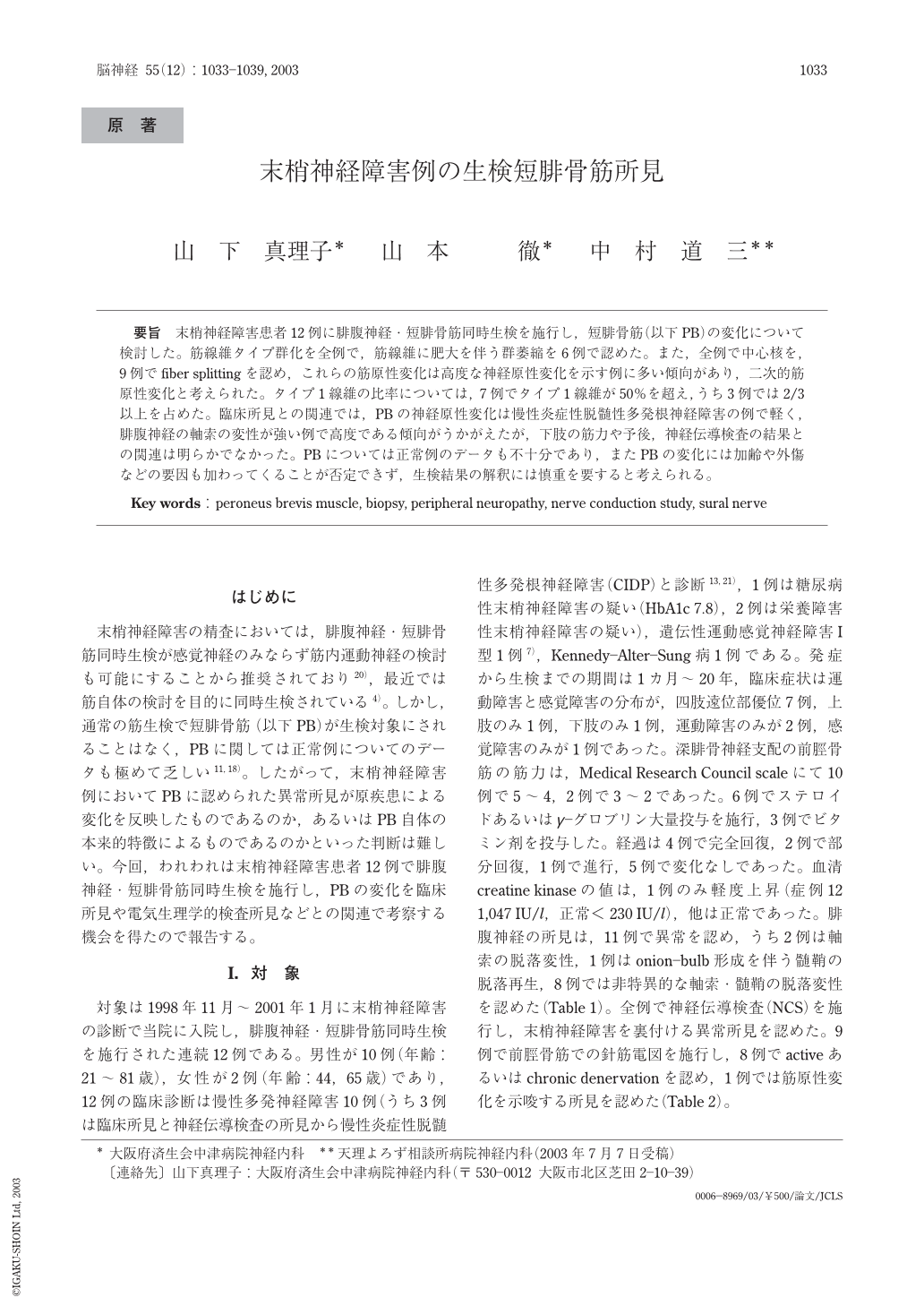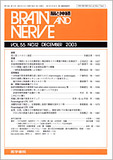Japanese
English
- 有料閲覧
- Abstract 文献概要
- 1ページ目 Look Inside
要旨 末梢神経障害患者12例に腓腹神経・短腓骨筋同時生検を施行し,短腓骨筋(以下PB)の変化について検討した。筋線維タイプ群化を全例で,筋線維に肥大を伴う群萎縮を6例で認めた。また,全例で中心核を,9 例でfiber splittingを認め,これらの筋原性変化は高度な神経原性変化を示す例に多い傾向があり,二次的筋原性変化と考えられた。タイプ1線維の比率については,7例でタイプ1 線維が50%を超え,うち3例では2/3以上を占めた。臨床所見との関連では,PBの神経原性変化は慢性炎症性脱髄性多発根神経障害の例で軽く,腓腹神経の軸索の変性が強い例で高度である傾向がうかがえたが,下肢の筋力や予後,神経伝導検査の結果との関連は明らかでなかった。PBについては正常例のデータも不十分であり,またPBの変化には加齢や外傷などの要因も加わってくることが否定できず,生検結果の解釈には慎重を要すると考えられる。
Abstract
We examined the peroneus brevis (PB) muscles obtained with the sural nerves from 12 consecutively biopsied patients who were clinically and electrophysiologically ascertained to have peripheral neuropathies. Histopathological examinations revealed fiber type grouping in all of the 12 PB muscles and group atrophy associated with hypertrophic fibers in 6. These neuropathic changes were ascribable to denervation and reinnervation, being compatible with the neuropathies. Further, internal nuclei were noted in all PB muscles, and fiber splittings in 10. These myopathic changes tended to be more pronounced in the PB muscles having severe neuropathic changes and regarded as the alteration secondary to the preceding neuropathic changes. Degenerated muscle fibers, consisting of phagocytosis, basophilia and whorled fibers, were sparsely found in 8 PB muscles, while rare necrotic fibers were seen in 2. Type 1 fiber predominance was present in 7 PB muscles, in 4 of which the ratio of type 1 fiber was more than 67%. Overall, the neuropathic changes were milder in the PB muscles of CIDP patients and more marked in those showing definite axonal degeneration in the sural nerve. The severity of the neuropathic changes in the PB muscles, however, did not necessarily correlate with the strength of the leg muscles, prognoses of the diseases or the results of the nerve conduction study in the peroneal nerve.
The PB muscle is liable to be affected by trauma or aging, which may modify the histopathological features of the biopsied PB muscle and therefore make the relationship between the clinical findings and the alteration of this muscle seems obscured. The available data of PB muscle have been sparse, particularly in the normal individuals, and we should be cautious in interpretation of the results of PB muscle biopsy.
(Received : July 7, 2003)

Copyright © 2003, Igaku-Shoin Ltd. All rights reserved.


